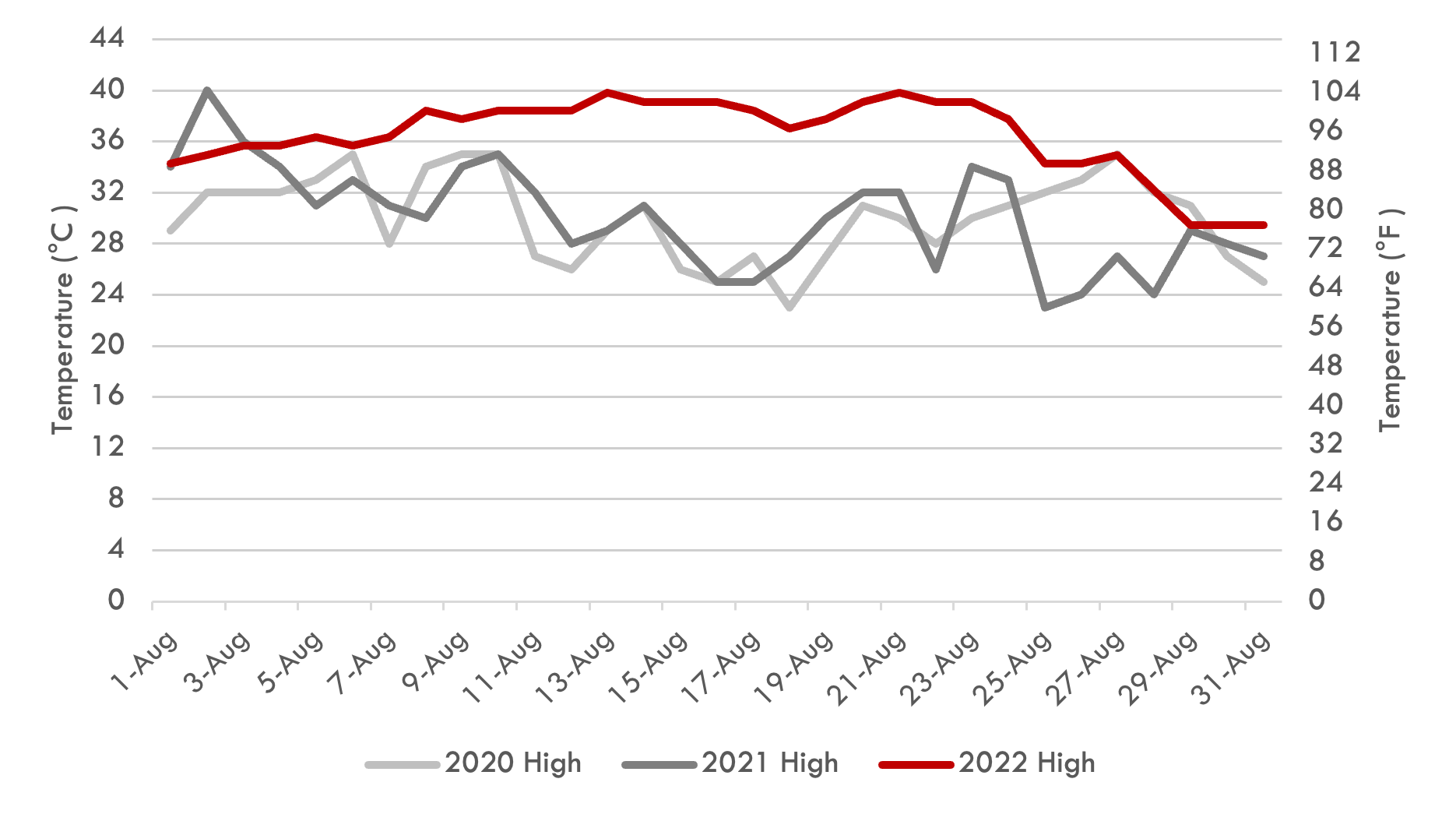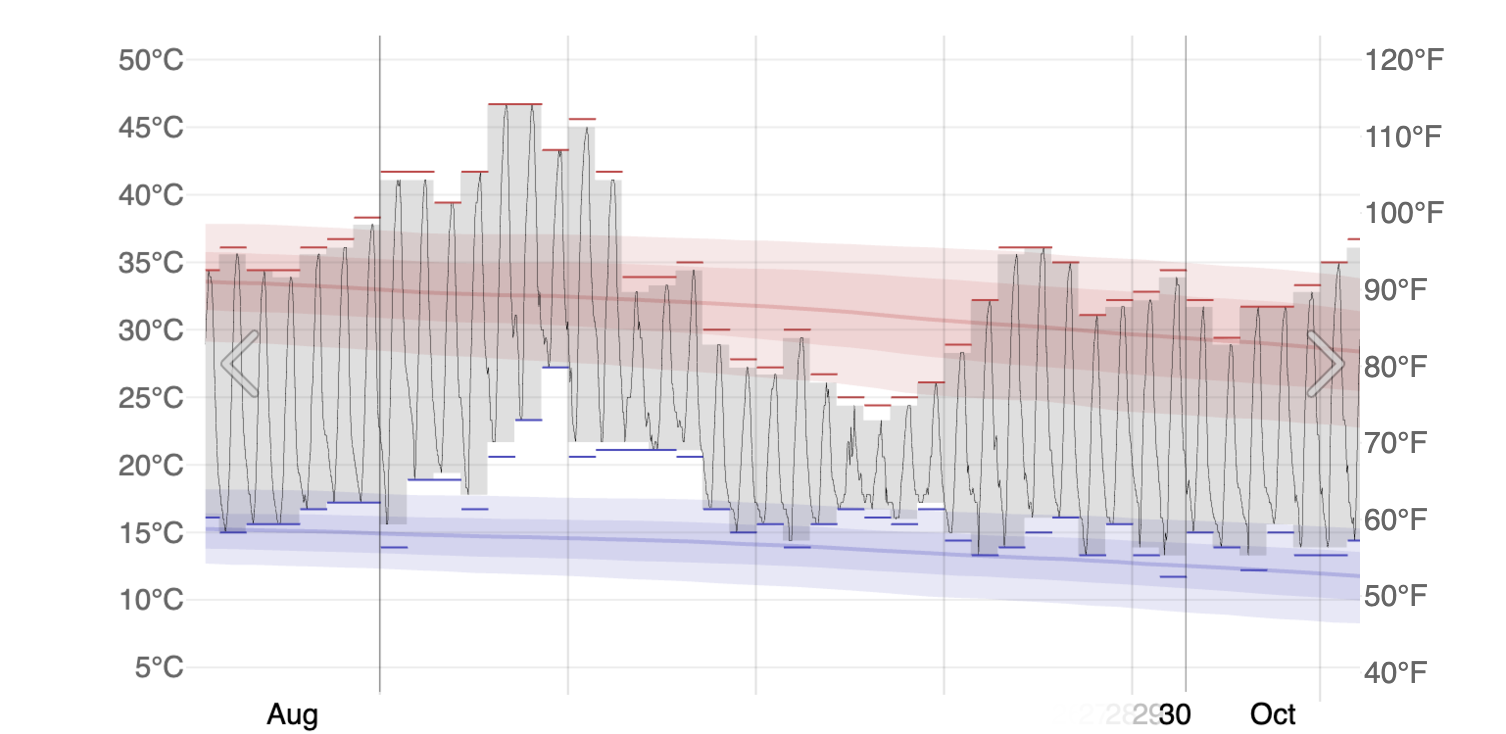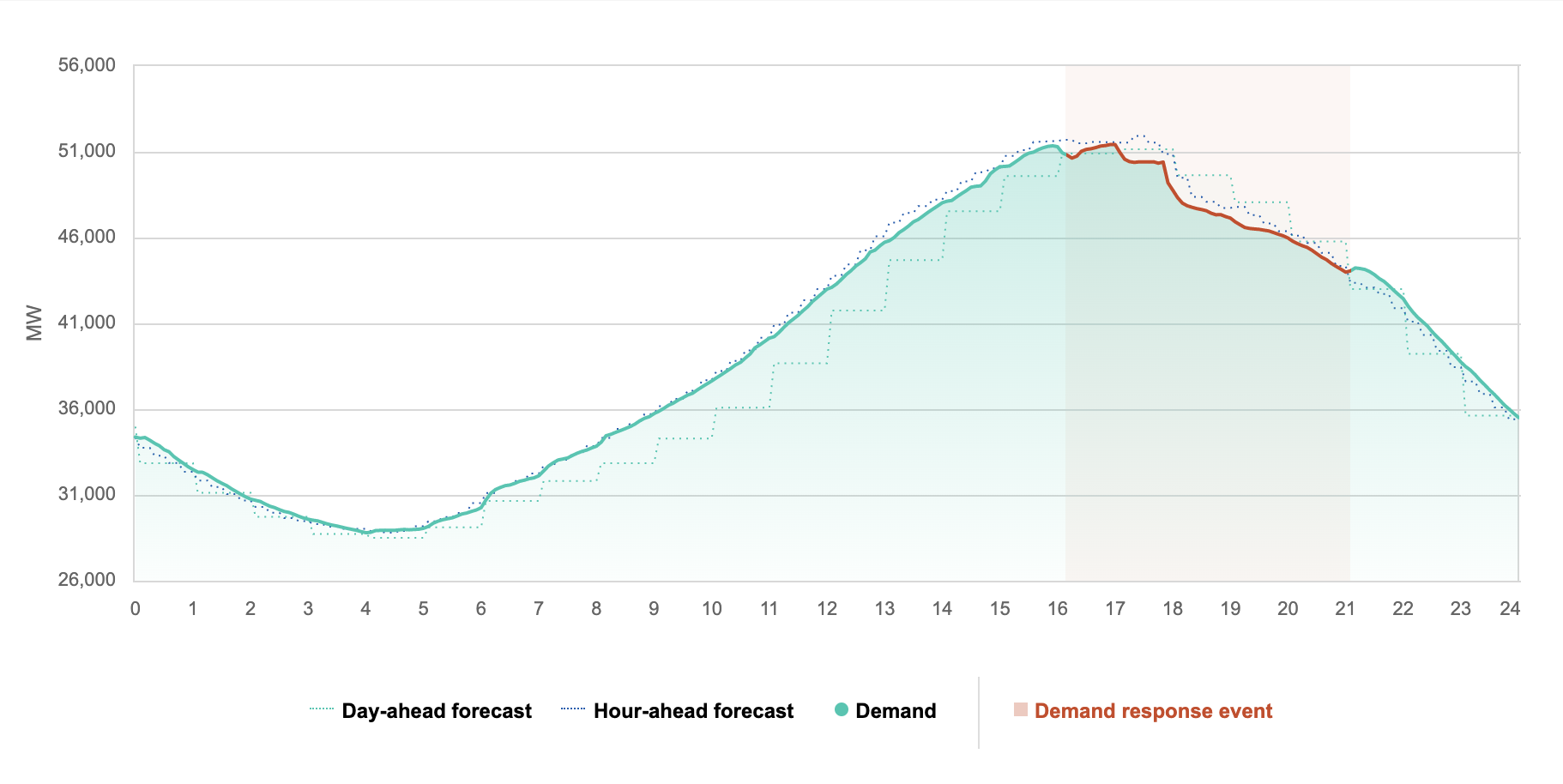
From Sichuan to California, Extreme Heat Is Pushing the Grid to Its Limit
A range of solutions, from market-based conservation measures to better grid infrastructure, could help prepare the electricity system for future extremes.
The heat wave along China’s Yangtze River during the summer of 2022 was a historically significant one. The National Meteorological Center of China issued a heat-wave red alert for the first time in August. At the same time, halfway across the globe, California was also enduring a grid emergency due to a historic heat wave. Power grids in both areas were on the brink of collapse, posing a tremendous economic risk to governments, businesses, and residents alike. Beyond that, an electric outage in the summer would expose families to the deadly effects of heat waves.
Sichuan: Record-Breaking Heat Wave Placed the Grid on Edge
Sichuan, lying along the upper Yangtze River, was acutely affected by the 2022 heat wave and suffered a severe power shortage. In Chengdu, the capital of Sichuan province, temperatures broke 35°C (95°F) and even broke 40°C (104°F) on consecutive days. August was much hotter in 2022 than in previous or normal years: the temperature trends show significant contrast among 2022, 2021, and 2020 (Exhibit 1).
Exhibit 1. August Temperature Highs in Chengdu
The heat wave drove up demand for electricity, with cooling needs putting enormous pressure on the grid over a brief period. This eventually led to a power shortage, and different categories of electricity customers were asked to take steps to conserve energy:
- Industry: The Sichuan Provincial Economic and Information Department and the State Grid Sichuan Branch jointly published an “Emergency Notification” that urged all industries in Sichuan to suspend production activities from August 15 to August 20 to prevent blackouts on the residential side.
- Prior to the Emergency Notification, Sichuan had already utilized active demand management and off-peak industrial production to spare over 12 GW of load. However, the load deficit persisted even with these advance actions.
- Government and Public Buildings: Air conditioning and lighting in buildings were either turned off or maintained at minimum essential operating levels to save energy.
- Business: Office buildings were asked to restrict centralized air-conditioning usage. Malls, commercial streets, and supermarkets were asked to limit air-conditioning usage and to turn off advertising monitors and elevators. Lighting in these areas was cut to 30 percent. Businesses were asked to shorten their hours as well.
- Homes: Residents were advised to cut any unnecessary use of energy and were encouraged to set the thermostat at 26°C (79°F) or above.
“Every kilowatt-hour counts” was the slogan resonating in Sichuan during the incident.
The explanation for the power shortage in August 2022 was a combination of unforeseen low supply, vigorous growth of demand, and inflexible interprovincial exports (Exhibit 2):
- Supply: Hydropower accounts for approximately 80 percent of Sichuan’s total power generation, but water flow in the Yangtze River hit a historic low in August due to the bizarre weather. The weak water flow limited the output of the hydro-dominated grid.
- Demand: As supply waned, the province’s electric demand was heading in the opposite direction. Sichuan’s residential load had almost doubled between July 2021 and July 2022. And with the excessive heat in August, the boom in demand continued, with a 78.5 percent increase compared to 2021.
- Export: Cities like Shanghai and Hangzhou, downstream of the Yangtze River, depend on Sichuan’s electricity exports, putting significant export responsibility on the province.
Exhibit 2. Yangtze River’s Water Level and Sichuan’s Residential Demand

California: Another Record Summer Brings Grid Stress and Sweltering Conditions
That same summer, California was also under stress from excessive heat and power supply shortages. Similar to Sichuan, California experienced record-breaking temperatures during the week of September 4. The daily high in Sacramento, the state capital, climbed above 44°C (110°F) on September 6 (Exhibit 3). The dramatic heat drove up demand to a new peak of 52,061 MW on September 6, breaking the previous record set 16 years prior.
Adding more difficulties to the supply side, demand peaked at 4:57, as the sun was waning and solar power output was declining. Over the following two hours, solar power’s output dropped rapidly from 10,047 MW to less than 1,000 MW.
Exhibit 3. Sacramento September Daily Temperature in 2022
Excessive heat and complications from other emergency events are not coincidences for California, which has fought these challenges for years. In summer 2020, rotating outages lasted for two days in August due to shortages in supply and excessive demand, affecting hundreds of thousands of residents. In summer 2021, California’s grid had a shortfall of 3,500 MW due to impacted hydroelectric power production and outages at gas plants. It only just avoided an outage by paying industrial energy users to run on diesel generators or engines.
The good news is the measures the state took this year showed progress in relieving the pressures on the grid. When California was facing the risk of rolling blackouts, it pulled back thanks to a series of “Flex Alerts” sent by the state’s grid operator that encouraged voluntary energy conservation and a Power Saver Reward (PSR) that provided a financial incentive. The governor also pushed a text alert to encourage energy conservation and off-peak charging of electric vehicles. The combination of the Flex Alert and statewide emergency measures precipitated a 2,600 MW drop in demand within an hour — equivalent to the instantaneous power usage of over 878,000 households (Exhibit 4).
Exhibit 4. California’s Demand Curve on September 6
Improving the Grid’s Climate Resilience for Extreme Weather Peaks
The solution to grid resilience challenges should cover multiple dimensions. Like a computer system, it requires both well-designed “software” and robust hardware.
Software: Leveraging Market-Based Measures for Real-Time Balance
Market-based solutions on both the supply and demand sides of the electricity markets are key to improving climate resilience. On the demand side, time-of-use (TOU) electricity pricing has been employed in both Sichuan and California, but the current tiers in TOU pricing may be insufficient to reflect the relationship between real-time supply and demand. Improving the granularity of electricity pricing could help consumers adjust their business models on electricity usage. As an option alongside TOU, dynamic pricing could encourage users to learn more about their usage patterns and possibly respond more elastically to electricity pricing. Dynamic pricing could release the potential of active load shedding during peak load hours from the demand side to help maintain grid balance.
Incentives to conserve during difficult and unexpected scenarios would provide another helping hand. This year in California, the Flex Alert was bundled with PSR, a rebate that credits consumers based on their energy conservation performance during the Flex Alert. Financial incentives should cause more users to pay attention to alerts and conserve energy, potentially saving the grid from collapse.
A comprehensive market mechanism is also needed on the supply side, specifically for backup power sources. Sichuan’s reliance on hydropower could be problematic if bizarre weather conditions happen more frequently in the future. Similarly, gas plants in California could be stressed by excessive heat and cause shortfalls of power supply. Capacity pricing mechanisms, which are designed to keep thermal power plants on standby for an emergency, would help sustain and secure dispatchable power sources — and would incentivize existing thermal power plants to transform to be more flexible. If a healthy market environment exists, investments in power sources specifically for reserve capacity will be more attractive, driving investment that further extends the capability of the grid to withstand extreme events.
Hardware: Well-Rounded Preparation
In parallel to developing market-based “software” for the grid, hardware upgrades like transmission network expansions and large-scale meteorological projections are increasingly needed as well. The existing transmission networks in some areas are limited in their electricity distribution due to insufficient planning. And the network can trigger devastating wildfires in drought-stricken areas due to outdated infrastructure. Retrofitting the existing network and expanding the network would provide adequate transmission and distribution capacity that would improve the reliability of the network and enable better utilization of the generation resources that are already in place.
With extreme events more likely to happen in the future, projections based on historical data may not be reliable moving forward. Large-scale meteorological observations and forecasts could inform early preparations for bizarre weather. Long-term meteorological observations, including complicated ocean and atmospheric circulations, could help predict if an extreme case — such as the combination of hydro shortages and extreme heat — is coming months or seasons ahead of time.
Scientists have warned that ongoing climate change is making weather extremes more frequent and intense. Now is the time to build a more climate-resilient grid in preparation for the next challenge.



